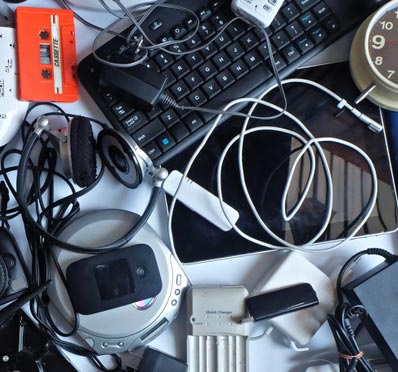In today’s technology-centric world, we’re all keen for the latest smartphone, laptop, and tablet device. But what happens to our old electronic devices when we’re finished with them? They become e-waste, the world’s fastest growing solid waste stream.
Unfortunately, irresponsible e-waste disposal is having a significantly negative effect on our environment; polluting our waterways, harming our ecosystems, and even polluting the air that we breathe. So, what can we do?
In this article we will unlock the secrets of responsible e-waste disposal so you can learn how to dispose of your old electronics responsibly and why it’s important.
The Secrets of Responsible E-waste Recycling
As global pressures around e-waste recycling practices intensify, let’s take a closer look at the secrets around e-waste recycling by discussing the process. After all, it’s the journey of e-waste disposal that makes all the difference to the final outcome. So, let’s get started.
Professional E-waste Collection
The first and arguably most important part about correct e-waste disposal is the professional collection of e-waste by a specialist company, such as Priority WEEE. E-waste collections are generally required for electronics that have reached the end of their life cycle, are no longer used/wanted, or are broken. There are many ways you can dispose of your e-waste and organise collections to ensure it is diverted from landfills and unofficial recycling practices.
Official E-waste Processing
Once your e-waste has been collected, it will be processed at a specialist recycling facility. This process ensures the items are disassembled and any hazardous materials such as batteries, lead, and mercury are extracted. Processing your e-waste properly avoids any harmful substances from ending up in landfills or, worse still, the environment.
Expert and Final Data Destruction
Data destruction is of vital importance when disposing of your electronics. This is particularly essential for businesses and organisations responsible for holding data on other people. When recycled responsibly, proper measures will be taken to erase any and all sensitive data from your electronic devices. This safeguards your personal information and avoids any potential data breaches for businesses.
Electronic Device Re-use
During the recycling stage, there are some devices that can be recovered for refurbishment or re-use. These devices often have parts that can be re-used to make new electronics or they simply need their own refresh to be used again. Making use of these electronics avoids unnecessary e-waste and encourages a culture of recycling and reusing that is vital in our throw-away culture.
How to Support E-Waste Companies
One of the biggest secrets around e-waste recycling is that you can support companies committed to recycling e-waste. Here are a few ways you can help:
- When purchasing new electronics, buy from companies who are committed to sustainable practices and eco-friendly manufacturing processes. This supports those businesses doing the right things and caring for the environment, the people who make these products, and the end consumer.
- Purchase from companies that offer buy-back schemes. Many companies nowadays offer buy-back schemes for old electronics. This means you can return your old electronics in exchange for money, discounts, or a gift voucher. This is a great scheme and reduces the problem of e-waste by helping upcycle unwanted devices that could otherwise be reused.
Final Words
We hope you have found this article informative. We’re on a mission to tell everyone about the importance of e-waste recycling so that we can change our planet for the better. For more information about e-waste recycling and best practices, check out our blog.


